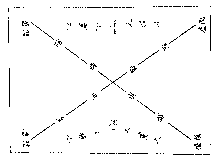Perspiration
 The patient should, first of all, be asked
whether sweating is present or not. Further inquiring deals with the feature of
sweating and its accompanying symptoms and signs.
The patient should, first of all, be asked
whether sweating is present or not. Further inquiring deals with the feature of
sweating and its accompanying symptoms and signs.
-
Absence of sweating in exterior
syndromes indicates invasion by pathogenic cold ; presence of sweating in
exterior syndromes suggests either exterior syndromes of deficiency type
resulting from exposure to pathogenic wind, or exterior heat syndromes due
to invasion by pathogenic wind heat. The accompanying symptoms and signs are
considered in differentiation.
-
Sweating that occurs during sleep and
stops upon wakening is known as night sweating. It usually indicates
deficiency of yin with hyperactivity of yang heat. The patient may also
present tidal fever and a red tongue with little coating.
-
Frequent sweating which is worse on
slight exertion is known as spontaneous sweating. It is a sign of deficiency
of qi and deficiency of yang. The patient may also exhibit chills,
restlessness and lassitude.
-
Profuse sweating accompanied by high
fever, mental restlessness, thirst with preference for cold drinks and a
surging pulse indicates interior heat syndromes of excess type resulting
from excessive yang heat in the interior expelling the sweat out. Ptofuse
sweating accompanied by restlessness, feeble energy, cold limbs and a deep
and thready pulse in a severe case is a critical sign indicating total
exhaustion of yang qi.
|
